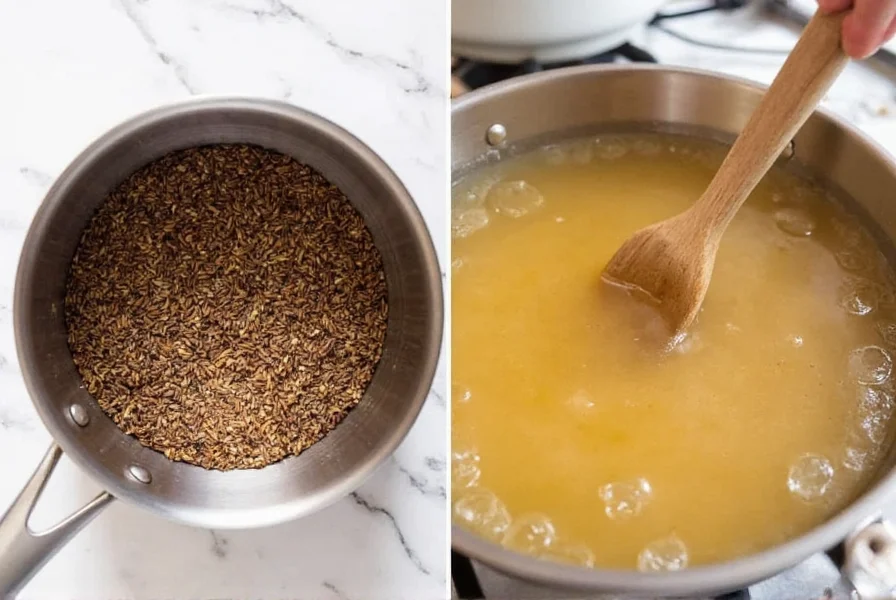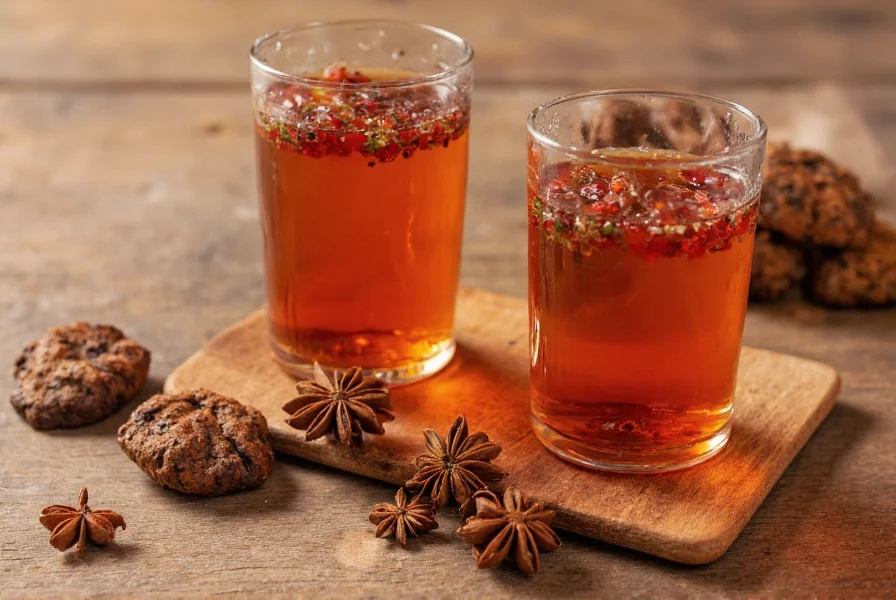The Rich History of Anise-Flavored Spirits
Anise drinks trace their origins to ancient medicinal practices. Historical records show that Egyptian physicians used anise seed preparations as early as 1500 BCE. The modern distilled anise beverages we recognize today began developing during the 18th and 19th centuries across the Mediterranean region. Each culture adapted the basic formula to local tastes and traditions, resulting in the distinctive regional varieties we know now.
The primary flavor compound in these drinks is anethole, which gives that characteristic licorice taste. This compound is naturally present in aniseed, star anise, and fennel—ingredients commonly used in traditional recipes. The precise botanical sources and production methods vary significantly by region, creating subtle but important differences in flavor profile and appearance.
Major Regional Varieties of Anise Drinks
Understanding the differences between various anise-based spirits helps appreciate their cultural significance. While they share similar flavor profiles, each has unique production requirements and serving traditions.
| Beverage | Country of Origin | Alcohol Content | Distinctive Characteristics |
|---|---|---|---|
| Ouzo | Greece | 40-50% ABV | Distilled with Greek aniseed; traditionally served with water causing the 'ouzo effect' |
| Raki | Turkey | 40-50% ABV | Often double-distilled; national drink of Turkey; typically accompanies meze |
| Pastis | France | 40-45% ABV | Contains licorice root in addition to anise; distinctive yellow color when diluted |
| Sambuca | Italy | 38-42% ABV | Often includes elderflower; traditionally served with coffee beans (con la mosca) |
The Science Behind the Ouzo Effect
One of the most fascinating aspects of traditional anise drinks is the 'ouzo effect'—the transformation from clear liquid to milky white when water is added. This phenomenon occurs because anethole, the primary flavor compound in anise, is soluble in alcohol but not in water. When water dilutes the alcohol content below a certain threshold (typically around 30% ABV), the anethole forms tiny droplets that scatter light, creating the characteristic cloudy appearance.
This emulsion isn't just visually interesting—it also affects the drinking experience. The cloudiness indicates that the flavor compounds have been properly released, enhancing the aromatic experience. Properly executed, this effect should create a stable emulsion that doesn't separate quickly, a sign of quality in traditionally made anise spirits.
Traditional Serving Methods and Cultural Significance
Anise drinks hold deep cultural importance across Mediterranean and Middle Eastern societies. In Greece, ouzo is traditionally served with meze (small plates) like olives, feta cheese, and grilled octopus. Turkish raki accompanies seafood and vegetable dishes, often during extended social gatherings. The French enjoy pastis with tapas-style snacks, while Italians traditionally serve sambuca after coffee.
Proper serving technique matters significantly. Most anise spirits should be served well-chilled, either straight from the freezer or with a few ice cubes. When adding water, the traditional ratio is 1 part spirit to 2-3 parts water, though personal preference plays a role. The water should be added slowly to properly activate the ouzo effect and release the full aromatic profile.
Exploring Anise Drink Flavor Profiles
While all anise drinks share that distinctive licorice note, their flavor profiles vary considerably based on production methods and additional botanicals. High-quality ouzo often features subtle notes of citrus and herbs alongside the dominant anise flavor. Premium raki may include hints of rosewater or other floral elements. Pastis typically has a more complex profile with licorice root adding earthy notes.
When tasting anise drinks, consider these elements:
- Nose: Quality spirits should have a clean, aromatic profile without harsh alcohol notes
- Palate: Look for balance between the anise flavor and supporting botanicals
- Finish: Premium anise drinks have a smooth, lingering finish without burning sensation
- Aftertaste: The best varieties leave a pleasant, refreshing sensation rather than harsh bitterness
Creating Simple Anise-Infused Beverages at Home
While traditional anise spirits require distillation, you can create flavorful anise-infused drinks without specialized equipment. Here's a simple method for making a non-alcoholic anise syrup that can be used in various beverages:
- Combine 1 cup water, 1 cup sugar, and 2 tablespoons crushed anise seeds in a saucepan
- Bring to a gentle simmer and cook for 10 minutes
- Remove from heat and let steep for 1 hour
- Strain through a fine mesh sieve
- Store in a sealed container in the refrigerator for up to 2 weeks
This syrup can be used to create refreshing anise-flavored lemonades, iced teas, or mocktails. For a traditional experience, mix 1 part syrup with 4 parts sparkling water and serve over ice with a lemon twist.

Understanding Anise Drink Production Methods
Authentic anise spirits are typically produced through one of two methods: distillation with aniseed or post-distillation flavoring. Traditional methods involve distilling neutral spirits with aniseed and other botanicals, allowing the flavors to integrate during the distillation process. This creates a more complex, integrated flavor profile compared to simply adding anise flavoring to finished spirits.
The quality of the base spirit matters significantly. Premium producers use high-quality neutral spirits derived from grapes, grains, or sugar beets. The distillation process must be carefully controlled to capture the delicate aromatic compounds while avoiding harsh fusel oils. Many traditional producers use copper pot stills, which help remove sulfur compounds that could create off-flavors.
Responsible Consumption and Health Considerations
Anise drinks, like all alcoholic beverages, should be enjoyed responsibly. While anise itself has been studied for potential digestive benefits, these effects don't necessarily transfer to the high-alcohol spirits made from anise. The alcohol content of traditional anise drinks (typically 40-50% ABV) means they should be consumed in moderation.
Some people may experience sensitivity to anise compounds, particularly those with allergies to plants in the Apiaceae family (which includes anise, fennel, and carrots). As with any alcoholic beverage, anise drinks may interact with certain medications, so consult with a healthcare provider if you have specific health concerns.
Exploring Anise Drink Pairings
The distinctive flavor profile of anise drinks makes them excellent companions to various foods. Their natural sweetness and aromatic qualities complement many dishes:
- Seafood: The clean, briny flavors of grilled octopus, squid, or fresh fish pair beautifully with ouzo or raki
- Cheeses: Feta, halloumi, and other salty cheeses create a delightful contrast with anise spirits
- Vegetable Dishes: Grilled vegetables, particularly eggplant and zucchini, work well with pastis
- Desserts: Citrus-based desserts can complement the herbal notes in anise drinks
When creating pairings, remember that the anise flavor can overwhelm delicate dishes, so balance is key. Start with small sips alongside food to discover your preferred combinations.
Frequently Asked Questions About Anise Drinks
What causes the cloudiness in anise drinks when water is added?
The cloudiness, known as the 'ouzo effect,' occurs when water dilutes the alcohol content below approximately 30% ABV. This causes anethole (the primary flavor compound in anise) to become insoluble, forming tiny droplets that scatter light and create the milky appearance. This emulsion indicates proper release of flavor compounds and is a sign of quality in traditionally made anise spirits.
Are all anise-flavored drinks alcoholic?
While traditional anise drinks like ouzo, raki, and pastis are alcoholic (typically 40-50% ABV), non-alcoholic anise-flavored beverages also exist. These include anise teas, syrups, and soft drinks. You can also create non-alcoholic versions at home by infusing water or simple syrup with anise seeds, as described in the homemade anise syrup recipe in this article.
How should anise drinks be properly stored?
Anise spirits should be stored in a cool, dark place away from direct sunlight. Once opened, they remain stable for several years due to their high alcohol content. For optimal flavor, many enthusiasts store ouzo and similar spirits in the freezer (they won't freeze due to the alcohol content) and serve them well-chilled. Non-alcoholic anise preparations like syrups should be refrigerated and used within 2-3 weeks.
What's the difference between anise, star anise, and fennel in drinks?
While all three provide licorice-like flavors, they have distinct characteristics. Anise seed (Pimpinella anisum) offers a sweeter, more delicate flavor. Star anise (Illicium verum) has a stronger, more intense flavor with subtle spicy notes. Fennel seed provides a milder, slightly grassier licorice flavor. Traditional regional drinks typically use specific botanicals: Greek ouzo uses aniseed, Turkish raki often uses aniseed with other botanicals, while some Chinese-inspired anise drinks may feature star anise.
Can anise drinks be used in cooking?
Yes, anise drinks work well in various culinary applications. They can enhance seafood sauces, add complexity to tomato-based sauces, and improve fruit compotes. When cooking with anise spirits, add them toward the end of the cooking process to preserve their delicate aromatic compounds. The alcohol will cook off, leaving just the flavor. For non-alcoholic cooking, anise seed or anise extract can be used as substitutes.











 浙公网安备
33010002000092号
浙公网安备
33010002000092号 浙B2-20120091-4
浙B2-20120091-4